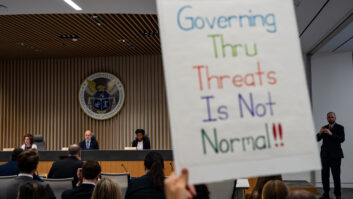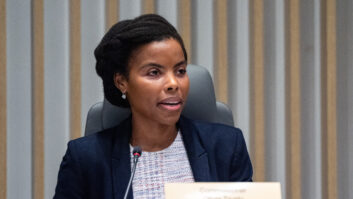The Federal Communications Commission moved to eliminate a long-standing filing requirement that keeps close tabs on a broadcaster’s equal employment opportunity practices — but Chairman Ajit Pai and other commissioners have stated that the decision will not impact the will commission’s commitment to carefully enforce its own EEO rules.
At its February Open Meeting, the commission voted to eliminate the Broadcast Mid-Term Report filing requirement, known to broadcasters as Form 397. This form has long been part of the commission’s mid-term reviews of broadcasters’ equal employment opportunity practices. Because most of the information that is collected in Form 397 will also be available in a broadcaster’s online public inspection file, the commission decided this particular filing requirement was outdated and unnecessary.
[Read: FCC Proposes Scrapping Broadcast Midterm EEO Report]
“At one time, this form served a useful purpose: It required certain broadcast television and radio stations to provide equal employment opportunity information around the midpoint of their eight-year license terms to assist the FCC in determining which stations would be subject to a mid-term review,” said FCC Chairman Ajit Pai. “But today the FCC can easily access nearly all of this information online in each station’s public inspection file.”
Following adoption of the order, the FCC plans to modify its online public inspection file so that this information will be more easily accessible. “Ending this redundant reporting requirement is such a common-sense step that literally nobody in our record — not a single commenter — has opposed it,” he said.
Pai also reiterated that the decision will not impact the commission’s ability to enforce its EEO rules, and he made some personnel steps to ensure that is the case, Pai said. The commission voted to move staff handling EEO enforcement from the Media Bureau to the Enforcement Bureau.
“Indeed, we recently made clear our commitment on this score by voting to move staff handling EEO enforcement from the Media Bureau to the Enforcement Bureau, where they will be better equipped to take action when our rules are violated,” Pai said.
Commissioner Jessica Rosenworcel concurred with the ruling, but in a statement she expressed disappointment that the commission did not also tackle the issue of diversity in broadcast ownership under this same order.
“Under the Communications Act, this agency has a duty to develop policies to support the diversity of broadcast ownership,” she said. “So while I appreciate the practical decision to eliminate Form 397, I am disappointed that we put the broader effort to address discriminatory practices related to media ownership off for the future,” she said. “Because media ownership matters.” She said in a statement that the commission has agreed to take up the issue in a future rulemaking.
The FCC also announced it would seek public comment on a proposal to ramp up enforcement of the FCC’s broadcast employment nondiscrimination rule, a move that organizations like the Multicultural Media, Telecom and Internet Council specifically commended. “The commission’s vote to open a comment period on EEO enforcement methods is long overdue and most welcome,” said Maurita Coley, president and CEO of MMTC.
Prior to the February vote, this proposal had been pending before the FCC since 2004, the organization said. Specifically, the supporters have asked the FCC to ban the predominant use of word-of-mouth recruitment from workplaces. According to the MMTC, the commission’s vote marks a definitive step by the Pai administration toward preventing race and gender discrimination in FCC-regulated industries.
The Report and Order can be found here.







